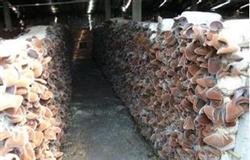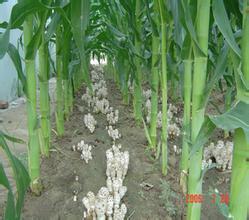Storage and preservation techniques of lily

(1) selection of storage-tolerant varieties China is the country of origin of lilies, and there are many types and varieties of cultivation. There are mainly varieties such as Longya lily, Sichuan lily and lily lily. Among them, the white, flat ball-shaped, tightly clasped, sweet Sichuan lily is of good quality and resistant to storage. Lily is generally harvested in early November, dig out the bulb with a spade, remove the stalk and soil in time, and cut off the fibrous root. Lily is not resistant to wind and sun, and newly dug bulbs should not be blown or insolated in the field to prevent outer scales from discoloration and dehydration. (2) the lilies after pre-cold fruit selection should be shipped to a cool place in time and spread evenly on the ground to dry, so as to dissipate the heat from the field so as to avoid the heat of the product. The drying time should not be too long to prevent the discoloration of scales. Stored lilies should choose bulbs that are white, fat, round, tightly clasped, without loose or scorched petals, and should be handled gently during operation to avoid injury. (3) Storage method ① yellow sand stratification first spread a thin layer of yellow sand or wet cheese on the floor in the room (library), and then pile up the selected lily bulb with a layer of yellow sand, which is about 1 meter high, and cover it with yellow sand to prevent lilies from being exposed to the air. When the lily is buried in the yellow sand, it can play the role of spontaneous air control, inhibit respiration, maintain a certain humidity, regulate dry humidity, and prevent the infection of pathogens. During storage, it is necessary to prevent heating in the pile and try to control the lower temperature, which can be stored until the following spring. ② cold storage can pack selected and pre-cooled lilies or pack plastic (11385, 55.00 and 0.65%) film bags and then box them, and send them to the cold storage for stacking or shelf storage. The storage temperature can be controlled at 0 ℃ and the relative humidity is 65% and 75%. It can often be stored until the following spring. The cold storage in California is to put the bulbs of Easter lilies in a polyethylene film box filled with dried peat at a temperature of-0.5 ℃ to prolong their storage life for several months. Plastic film can prevent water loss and inhibit its rooting, sprouting and disease development in peat and low temperature.
- Prev

Cultivation technique of Auricularia auricula with Rice Straw
The main results are as follows: (1) the quality of rice straw softening treatment is the key to the success or failure of cultivating Auricularia auricula and obtaining high yield. Straw is a kind of loose, easy to accumulate water and not easy to fix material, especially its epidermis, with a layer of wax, this kind of wax paper can prevent mycelium from eating. Through experiments, we have found out three kinds of straw.
- Next

How to interplant Coprinus comatus in chili field
Interplanting Coprinus comatus in pepper field is a good method to imitate wild cultivation of Coprinus comatus, which can save the cost of building mushroom house, does not occupy space, and can greatly improve the economic benefit per unit land area. Generally, after the pepper is planted, trenches are opened, materials are laid and bacteria are spread in the middle of the pepper row. For managing and harvesting mushrooms.
Related
- Fuxing push coffee new agricultural production and marketing class: lack of small-scale processing plants
- Jujube rice field leisure farm deep ploughing Yilan for five years to create a space for organic food and play
- Nongyu Farm-A trial of organic papaya for brave women with advanced technology
- Four points for attention in the prevention and control of diseases and insect pests of edible fungi
- How to add nutrient solution to Edible Fungi
- Is there any good way to control edible fungus mites?
- Open Inoculation Technology of Edible Fungi
- Is there any clever way to use fertilizer for edible fungus in winter?
- What agents are used to kill the pathogens of edible fungi in the mushroom shed?
- Rapid drying of Edible Fungi

